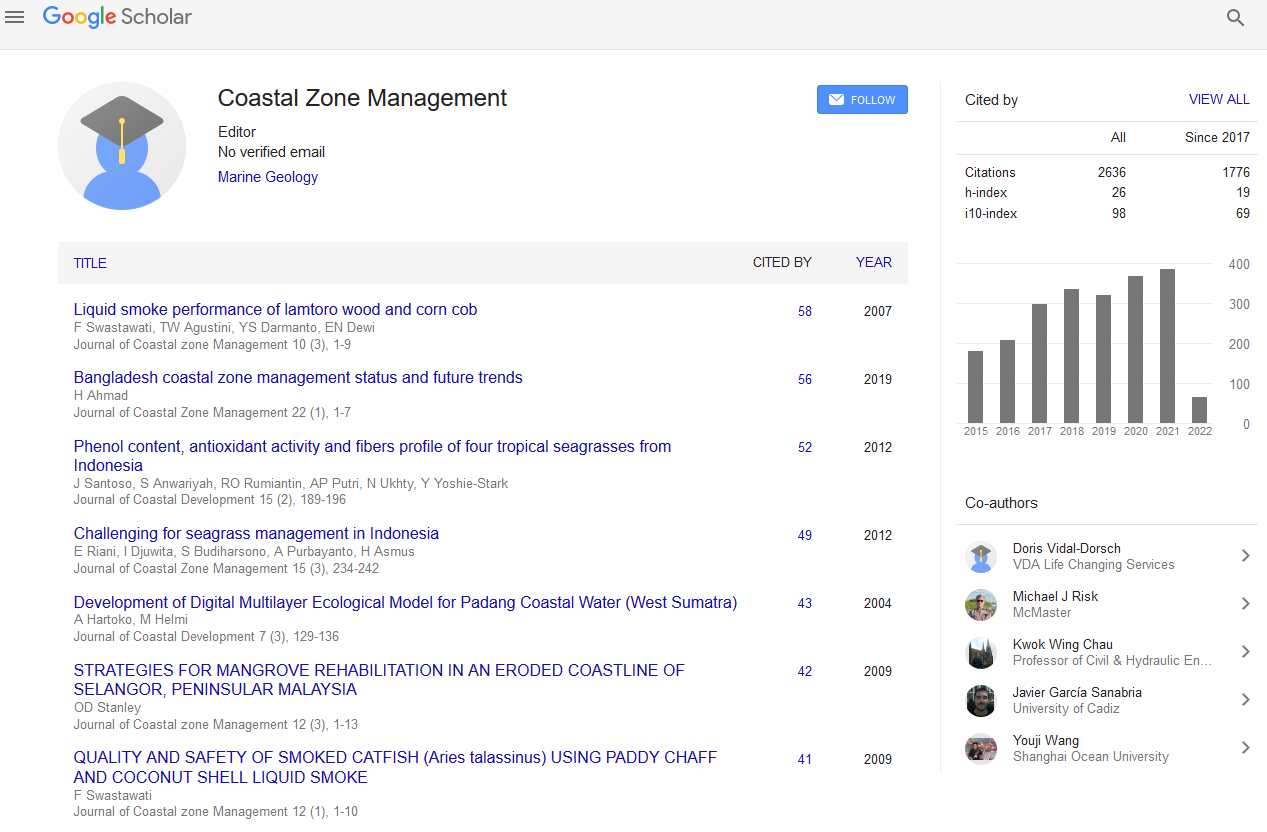Indexed In
- SafetyLit
- RefSeek
- Hamdard University
- EBSCO A-Z
- OCLC- WorldCat
- Publons
Useful Links
Share This Page
Journal Flyer

Open Access Journals
- Agri and Aquaculture
- Biochemistry
- Bioinformatics & Systems Biology
- Business & Management
- Chemistry
- Clinical Sciences
- Engineering
- Food & Nutrition
- General Science
- Genetics & Molecular Biology
- Immunology & Microbiology
- Medical Sciences
- Neuroscience & Psychology
- Nursing & Health Care
- Pharmaceutical Sciences
Abstract
Plankton and Some Environmental Variables as a Water Quality Indicator for Saline Pools at the Western Red Sea (Saudi Arabia)
Hussein Elsayed Touliabah, Elbassat RA, Tourk AJ, Affan MA, Hariri MS, Hassanine RME, Abdulwassi NIH and Almutairi AW
This study was carried out to determine the water quality of a series of micro-pools water, north Jeddah Corniche, by studying the environmental variables as well as phytoplankton abundance and community structure. Surface water samples were monitored from a series of pools over two seasons; spring (May) and autumn (November), 2013. The pools are shallow; saline to hypersaline showed salinity gradients from 40.0 to 63.0 PSU, pH values from 7.50 to 8.18; temperatures from 21.0 to 43.0°C; dissolved oxygen concentrations from 2.1-6.4 mgl-1. Nutrient concentrations were very high in spring. Nitrate ranged between 0.3 and 6.3 μM, nitrite between 0.1 and 1.2 μM, ammonia upto 16.7 μM, phosphate concentrations from 0.35 to 4.60 μM and silicate reached 20.86 μM.Species diversity (Shannon- Weaver, H) and evenness (J) were high and showed small-scale temporal and spatial variations. A total of 99 species of phytoplankton were recorded, showing a well-diversified taxonomy, belonging to 5 different classes. Cyanophyta dominating during spring while Bacillariophyta during autumn. The most representative class in terms of species richness was Bacillariophyta (46 species) while Cyanophyta and Pyrrophyta had 29 and 22 species, respectively. No significant differences were observed in phytoplankton population among pools. Positive correlation of Cyanophyta with NO2, NO3 and PO4. The Shannon-Wiener Diversity Index classified the pools water as being clean, whereas the WQI demonstrated that it was between ‘medium’ and ‘good’, which means beginning deterioration of the water quality. It can be concluded that, the index based on WQI is currently more suitable than the phytoplankton species index for assessing the quality of the pools water. We recommended to drilling several culverts for each pool to allow good water masses exchange between pools water and the Red Sea water.

